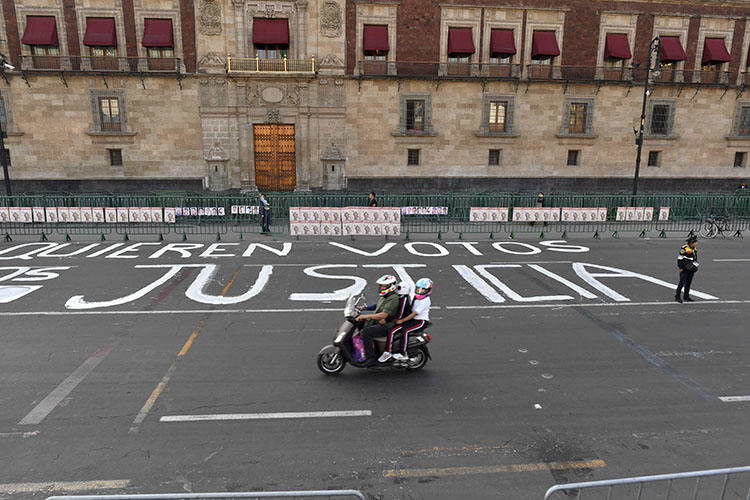Mexico City, December 4, 2018–The Committee to Protect Journalists urges Mexican authorities to immediately undertake a credible and rigorous investigation into the killing of journalist Alejandro Márquez Jiménez, whose body was found on December 1 near Tepic, the capital of the northwestern state of Nayarit, according to news reports.
Márquez, 40, was the editor at Orión Informativo, a biweekly print and online newsmagazine he founded approximately two years ago, Nayarit-based reporter Norma Cardoso told CPJ yesterday. He had previously worked for around eight years at Crítica Diario, a local newspaper.
Local media said the reporter had also been politically active and supported the Movement for National Regeneration (Morena), the ruling political party of president Andrés Manuel López Obrador, who assumed office on December 1. In a photo published widely on the day the news of his death was first reported, he was shown with López Obrador wearing a polo shirt sporting the logo of Morena.
“Mexican authorities must immediately do everything in their power to properly investigate whether the killing of Alejandro Márquez was in any way related to his work as a journalist,” said Jan-Albert Hootsen, CPJ’s Mexico representative. “Deadly violence against reporters in Mexico will continue as long as attackers are allowed to act in impunity.”
According to news reports, the body of the reporter was found in a ditch near the Tepic airport on the morning of December 1. In a December 2 article, Mexico City newspaper Excelsior said that he was last seen alive the afternoon of November 30, when he received a phone call while eating with his family, after which he left his home. The nature of the phone call has not been reported in national or local media. Several calls by CPJ to Márquez’s family via cell phone remained unanswered as of December 4.
A December 3 article on the website of the reporter’s former employer, Crítica Diario, reported that Márquez’s body had been found with at least four bullet wounds, citing anonymous sources. The newspaper added that the body showed signs of beatings. A spokesperson for the Nayarit Attorney General’s Office (FGE) told CPJ yesterday that he had not yet been authorized to disclose any details about the investigation. As of December 4, the FGE had yet to release a statement on its website or its Facebook and Twitter pages about the murder.
Several attempts by CPJ on December 4 to reach Crítica Diario‘s editor Lenín Guardado via WhatsApp message remained unanswered.
Ricardo Sánchez Pérez del Pozo, who heads the office of the Federal Special Prosecutor for Attention to Crimes Committed against Freedom of Expression (FEADLE), told CPJ yesterday that his offices had opened an investigation into the murder.
Orión Informativo mostly covered local politics in Tepic and surrounding municipalities, according to reporter Norma Cardoso and news reports. CPJ was able to retrieve several articles published on the magazine’s website in the last days before Márquez’s murder, which all dealt with political events in the region, but was unable to obtain copies of its recent print editions. Cardoso told CPJ that Márquez was well known for his highly critical reporting on local politics in the region but said that she was unaware of any threats against his life. CPJ was unable to find evidence of threats or previous attacks against Márquez as of December 4.
A spokesperson for the Federal Mechanism for the Protection of Human Rights Defenders and Journalists, who asked to remain anonymous to speak freely on the matter, told CPJ on December 2 that Márquez had not been incorporated in a federal protection scheme and had not reported threats to the institution.
Mexico is the deadliest country in the Western Hemisphere for journalists. With the murder of Alejandro Márquez, at least 10 reporters have been killed in Mexico in 2018, according to CPJ research. CPJ has determined that at least four of the journalists killed in 2018 were targeted in direct reprisal for their work.
